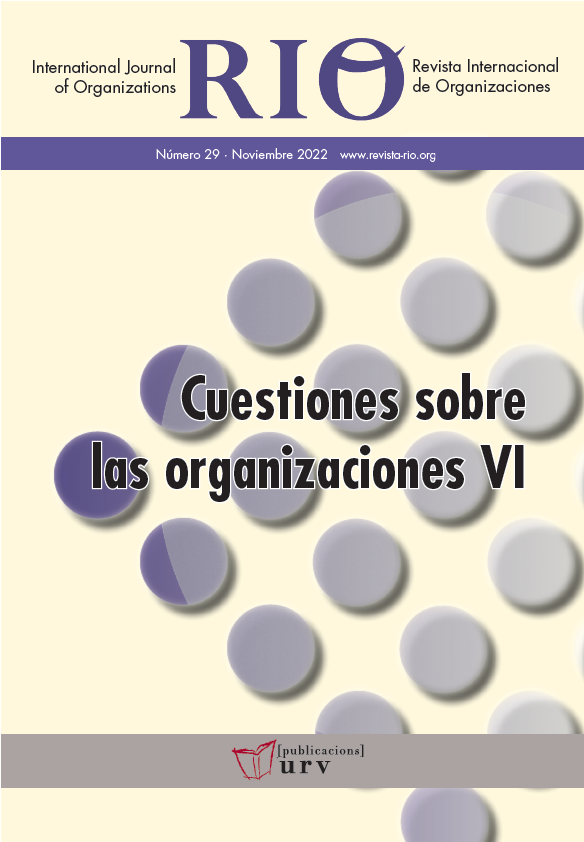Abstract
The Dual Vocational Education Training (VET) model is an innovative and interesting proposal from Germany with a high impact and significant results in terms of employability, youth labor insertion and the training of specialized human capital. In a context different from that of developed countries, the dual VET model was implemented in Mexico in 2015 by TecNM (Tecnológico Nacional de México) as an education policy aimed at activating the national economy, strengthening the links between the educational and the productive sectors, and boosting the labor market insertion of young graduates from technological institutes located throughout the country. In this quantitative study we used the Chi-square test to assess the influence of this education policy on the technological higher education subsystem via surveys administered to the social actors involved. We found that the legal framework, the socioeducational conditions, and the transition from technology to the productive sector had highly significant reliability scores. This confirms that, provided certain regional adaptability factors are taken into account, dual VET is an important model in the national context since it promotes access to higher education, fosters social inclusion, and provides labor and professional opportunities for graduates of the program via the Tecnológico Nacional de México.
References
Alemán, J. (2015). El sistema dual de formación profesional alemán. Educaco e Pesquisa, 41(2), 495-511.
Arraya, I. (2008). La formación dual y su fundamentación curricular. Revista Educación XXI, 32(1), 45-61.
Brunet, I., & BÖcker, R. (2017). El modelo de formación profesional dual en España. Revista Internacional de Organizaciones(18), 89-108.
CEPAL. (2017). Panorama de la educación técnica y profesional en América Latina y el Caribe. Santiago de Chile: Series Políticas Sociales 222.
Comisión Europea . (2010). Una estrategia para el crecimiento inteligente, sostenible e integrador. Obtenido de http//:eur-lex.europa.eu/LexUriServ/LexUriServ.do?uri=COM:2010:FIN:ES:PDF
Euler, D. (2013). El sistema dual en Alemania. ¿Es posible transferir el modelo al extranjero? Alemania: Berthelsmann Stiftung.
Menéndez, L., Ballester, L., & Olíver, P. (2018). Formación como elemento de cohesión social en Europa. Análisis compartativo de sinergias y recursos ejecutados, empleando una muestra de edidas operativas en el marco de las políticas europeas de la formación profesisonal y vocacional (VET). Revista Española de Educación Comparada, 107-150.
Molina, I. (2016). La formación dual: un nuevo enfoque en la formación profesional. Revista Internacional de Organizaciones(17), 129-139.
OCDE. (2012). Education at a glance 2012. doi:http:/dx.doi.org/10.1787/eag-2012-en
OIT. (2018). Perspectivas sociales y del empleo en el mundo 2018. Tendencias 2018. Tendencias 2018. Oficina Internacional del Trabajo.
Palos, E., & Herraiz, M. (2013). El sistema de educación dual: nuevas avenidas en la cooperación bilateral entre Alemania y México. Revista Mexicana de Política Exterior(99), 97-115. Obtenido de http://revistadigital.sre.gob.mx/images/stories/n99/palosherraiz.pdf
Pineda, P., Ciraso, A., & Arnau, L. (2019). La formación profesional dual desde la perspectiva del profesorado: elementos que condicionan su implementación en los centros. Revista Educación XXI, 22(1), 15-43.
Plan Nacional de Desarrollo. (29 de 02 de 2016). Gobierno de México. Obtenido de Plan Nacional de Desarrollo 2013-2018: https://www.gob.mx/segob/acciones-y-programas/programas-derivados-del-plan-nacional-de-desarrollo-2013-2018
SEP. (2015). Modelo de educación dual para el nivel licenciatura del Tecnológico Nacional de México (MEDTecNM).
TecNM. (26 de 07 de 2014). TecNM. Obtenido de https://www.tecnm.mx/pdf/jur%C3%ADdico/decreto_tecnologico_nacional_mexico.pdf
UNESCO. (2016). Estrategia para la enseñanza y formación teécnica y profesiona. Nueva York, Estados Unidos de Norte América. Obtenido de http//:unesdoc.unesco.org/images/0024/002452/245239s.pdf

This work is licensed under a Creative Commons Attribution-ShareAlike 4.0 International License.
Copyright (c) 2022 International Journal of Organizations






